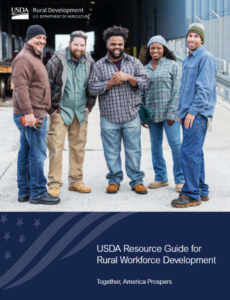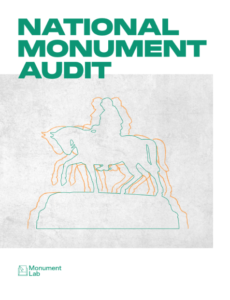October
2021
October 4, 2021
From the Field
New Technical Theatre Workforce Diversity Data
 The United States Institute for Theatre Technology (USITT) has just conducted a study with SMU DataArts to better understand the demographic makeup of the technical theatre workforce. The report, Entertainment Design & Technology Workforce Demographics Study, draws from a survey of more than 1,500 USITT theatre workforce members and addresses diversity, salaries and the early impacts of the COVID-19 pandemic. The data acquired will serve as the first baseline from which to measure future changes and successes in theatre diversity; USITT plans to undertake the next survey in 2026.
The United States Institute for Theatre Technology (USITT) has just conducted a study with SMU DataArts to better understand the demographic makeup of the technical theatre workforce. The report, Entertainment Design & Technology Workforce Demographics Study, draws from a survey of more than 1,500 USITT theatre workforce members and addresses diversity, salaries and the early impacts of the COVID-19 pandemic. The data acquired will serve as the first baseline from which to measure future changes and successes in theatre diversity; USITT plans to undertake the next survey in 2026.
Surveyed Attitudes toward Proof of Vaccine
 Impacts Experience has just published Should Cultural Entities Require Proof of Vaccinationn? a survey of arts patrons’ attitudes toward requiring proof of vaccination as a condition for attending arts events. It found that 48% of respondents want cultural institutions to require potential visitors to show proof of vaccination to attend performances and exhibits. 59% of respondents with young children favor organizational vaccine requirements, while respondents without young children came in at 44%. This new data, along with Impacts Experience’s continuous study of attitudes toward masking, is an important resource for arts and cultural organizations in deciding how to reopen and provide safe experiences.
Impacts Experience has just published Should Cultural Entities Require Proof of Vaccinationn? a survey of arts patrons’ attitudes toward requiring proof of vaccination as a condition for attending arts events. It found that 48% of respondents want cultural institutions to require potential visitors to show proof of vaccination to attend performances and exhibits. 59% of respondents with young children favor organizational vaccine requirements, while respondents without young children came in at 44%. This new data, along with Impacts Experience’s continuous study of attitudes toward masking, is an important resource for arts and cultural organizations in deciding how to reopen and provide safe experiences.
Arts Organizations at a Crossroads Toolkit
The National Coalition for Arts’ Preparedness & Emergency Response—of which NASAA is a participating partner—has just released Protecting Your Assets Toolkit. This toolkit is a valuable resource for arts organizations seeking to manage transitions and preserve assets, offering guidance in three distinct areas: legal and structural choices, protecting your knowledge assets, and managing and preserving your legacy. Each section contains useful forms, worksheets, and links to resources geared toward the unique challenges that arts and cultural organizations face during periods of change.
USDA Resource Guide for Rural Workforce Development
 The U.S. Department of Agriculture (USDA) is prioritizing collaborations with its federal partners to help start and grow businesses and give individuals the educational and financial tools to succeed in rural America. To this end, the USDA Rural Development Innovation Center developed a new guide for community leaders and other local entities to help them access resources to create jobs, train talent, expand educational opportunities and provide technical assistance. The guide outlines programs and services available at USDA and other federal departments and agencies that support workforce development in rural communities.
The U.S. Department of Agriculture (USDA) is prioritizing collaborations with its federal partners to help start and grow businesses and give individuals the educational and financial tools to succeed in rural America. To this end, the USDA Rural Development Innovation Center developed a new guide for community leaders and other local entities to help them access resources to create jobs, train talent, expand educational opportunities and provide technical assistance. The guide outlines programs and services available at USDA and other federal departments and agencies that support workforce development in rural communities.
2020 Census Data Reveals that Rural America Is Becoming More Diverse
The Housing Assistance Council (HAC), a nonprofit that supports affordable housing efforts in rural America, released an analysis and article that examine early returns of 2020 Census data to review characteristics, trends and issues related to race and ethnicity in rural America. Contrary to the long-standing narrative of racial and ethnic homogeny across rural America, many racial and ethnic groups are represented in rural communities. While the 2020 Census reports that approximately 74.8% of the rural population is White non-Hispanic (compared to 57.8% for the United States as a whole), Hispanics are the second most prevalent racial or ethnic group in rural America, comprising 10.4% of the rural population. It is important to note that Hispanics may be of any race. With a population count of 4.5 million, Black residents make up 7.4% of the rural population and are the third most prevalent racial or ethnic group in rural areas.
National Monument Audit
 Monument Lab, in partnership with the Andrew W. Mellon Foundation and its Monuments Project, has just released the National Monument Audit. This audit examines nearly 50,000 monuments to understand the current landscape of American monuments. Focusing on monuments dedicated to individuals, the report finds that monuments change often; portray predominantly white, wealthy, male figures; largely commemorate acts of war and conquest; and omit many aspects of America’s complex history. The audit calls for further critical analysis of the power structures inherent in creating monuments and a shift toward better representation in monuments. The report also supports engaging and correcting current misrepresentation and working toward creating a monument landscape that fosters healing and repair.
Monument Lab, in partnership with the Andrew W. Mellon Foundation and its Monuments Project, has just released the National Monument Audit. This audit examines nearly 50,000 monuments to understand the current landscape of American monuments. Focusing on monuments dedicated to individuals, the report finds that monuments change often; portray predominantly white, wealthy, male figures; largely commemorate acts of war and conquest; and omit many aspects of America’s complex history. The audit calls for further critical analysis of the power structures inherent in creating monuments and a shift toward better representation in monuments. The report also supports engaging and correcting current misrepresentation and working toward creating a monument landscape that fosters healing and repair.
In this Issue
From the President and CEO
State to State
- Maryland: Equitable Funding Model for General Operating Support
- Oregon, West Virginia: Artist Relief Funds
Legislative Update
The Research Digest
Announcements and Resources
More Notes from NASAA
SubscribeSubscribe
×
To receive information regarding updates to our newslettter. Please fill out the form below.
